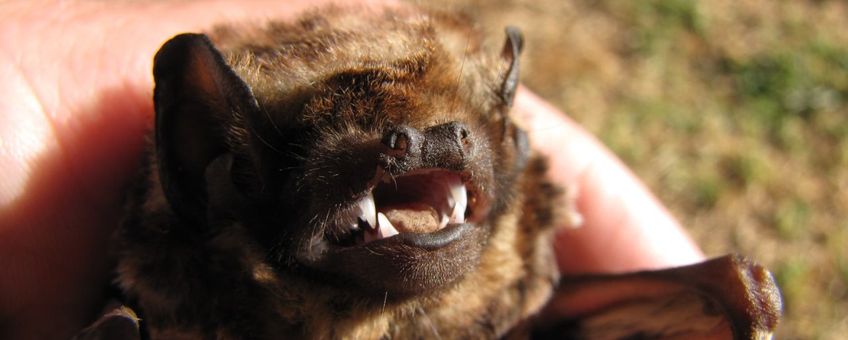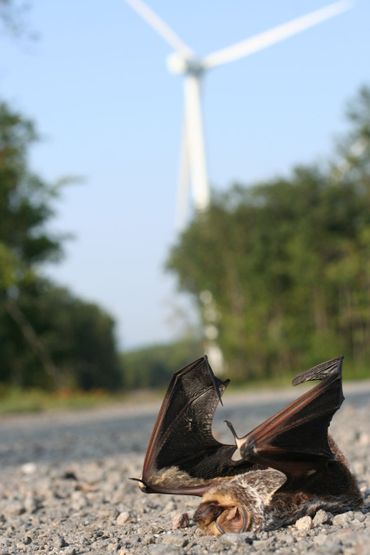
Wind turbine blades could decimate North America’s most widespread bat species
Bat Conservation International
“The hoary bat could be the next spotted owl. This species is headed for the emergency room if we don’t act now,” says Mike Daulton, Executive Director of Bat Conservation International.
The hoary bat (Lasiurus cinereus) is the species most frequently killed by wind turbines in the U.S. and Canada. Although currently widespread across the continent’s forests, an estimated 128,000 are killed each year.
The study, which brought together international experts, academics and biologists from several federal agencies, looked at hoary bat mortality at wind energy facilities. It revealed that populations of the species may plunge by a staggering 90 percent over the next 50 years if no action is taken to curb the bat mortality.
“These findings are a wakeup call. Our study focused on the hoary bat, which has the highest observed fatalities. Other migratory bats also have high levels of mortality from wind turbines,” explains Winifred Frick, Senior Director of Conservation Science for Bat Conservation International and lead author on the paper.
“We need to implement significant conservation measures to reduce mortality from wind turbine collisions and soon. Effective conservation measures will help not just hoary bats but all bats that get killed by turbines,” says Frick.
While this new research validates concerns shared by the conservation community and wind industry, the future is not all doom and gloom.
“Solutions are within our grasp. We have great hope that this is a problem that the conservation community, key government agencies and the wind industry can work together to solve,” said Daulton.
This study is published in the scientific journal Biological Conservation.
Thermal video image of a bat encounter with a wind turbine (Source: Bat Conservation International)
Text: Micaela Jemison, Bat Conservation International
Photos: Forest and Kim Starr, CC by SA 2.0 (leadphoto: hoary bat); Michael Schirmacher, Bat Conservation International
